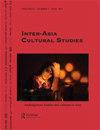Subcontinental media
IF 0.3
4区 社会学
Q4 ANTHROPOLOGY
引用次数: 0
Abstract
The following is the second set of papers from the conference “Innovations in the Social Sciences and Humanities,” in December 2021, at Ton Duc Thang University, Ho Chi Minh City, Vietnam. As mentioned in the January issue of Inter-Asia Cultural Studies, the idea of “transforming knowledge production” (Chen 2010, 216) brings us to this special section interested in the ways media connects Indian audiences with the world through different formats. We reach back from the “imagined communities” of “print capitalism” (Anderson 1983), through global-social “mediascapes” operating through new technologies and connectivities, that now mediate a “naked struggle between the pieties and realities of Indian politics” (Appadurai 2006, 595). The theme is the significance of the formations of Indian media, though without covering all angles, the section investigates newspapers, film, video and television news. The indicator of note is that there is more to be done to build on the new South Asian media studies work represented in texts as diverse as Madhava Prasad (1998, 2014), Gera Roy (2012, 2015), and Ravi Sundaram (2009; 2013), among others. There are five papers here. The first tells the story of the emergence of English and vernacular language newspapers in India, entailing engagement with the early formation of the Bengali intelligentsia—the bhadralok class fraction prominent. Some older controversial history, about papers like Hicky’s Bengal Gazette (Otis 2018) is required to understand why the nineteenth-century formation of the press is still hugely relevant to how thewidermedia sees itself today. Reforming and informing, campaigning and campafflicted, knowledge-promoting and seemingly all-knowing, Shaswati Das shows how this estate took some time to negotiate its path between the forces of Government (then the British colonial regime) and the factional aspirations of emergent nationalism. Film history has been central to Indian political imaginings since the emergence of cinema— the first films made in the 1910s as “mythologicals” and by the 1960s cinemahad a political and national role without question. Within this, as John Hutnyk shows, the Bengali auteur cinema of Satyajit Ray and Ritwik Ghatak made international linkages, in this case reacting to the struggle in Vietnam, but verymuch fromwithin the sensibilities of a national Indian andBengali, even Calcuttan imaginary (see Mrinal Sen in Reinhard Hauff’s film, Ten Days in Calcutta, Hauff 1987). The importance of international solidarity and a cinema of the world was very much a part of the self-understanding of Indian media from its earliest manifestations. Histories of the cinema spaces, and subsequently video halls, are an aspect of this same trajectory. Still, the paper of Dattatreya Ghosh alerts us to critical submerged aspects of this narrative that need to be brought out through close, careful archival media work.次大陆的媒体
以下是2021年12月在越南胡志明市同德堂大学举行的“社会科学与人文科学创新”会议的第二组论文。正如《亚洲文化研究》一月号所提到的,“转化知识生产”的概念(Chen 2010, 216)将我们带到了这个特别的部分,该部分对媒体如何通过不同的形式将印度受众与世界联系起来感兴趣。我们从“印刷资本主义”的“想象社区”(Anderson 1983)中回溯,通过新技术和连接运作的全球社会“媒体景观”,现在调解了“虔诚与印度政治现实之间的赤裸裸的斗争”(Appadurai 2006,595)。主题是印度媒体形成的意义,虽然没有涵盖所有角度,但该部分调查了报纸,电影,视频和电视新闻。值得注意的是,在Madhava Prasad(1998年、2014年)、Gera Roy(2012年、2015年)和Ravi Sundaram(2009年;2013)等。这里有五张纸。第一部分讲述了英语和本土语言报纸在印度出现的故事,涉及到孟加拉知识分子的早期形成——主要是巴德拉洛克阶级的一部分。我们需要了解一些更早的有争议的历史,比如像《希基的孟加拉公报》(Otis 2018)这样的报纸,才能理解为什么19世纪媒体的形成仍然与今天的广泛媒体如何看待自己有着巨大的关系。沙斯瓦蒂·达斯(Shaswati Das)展示了这个遗产如何花了一些时间在政府(当时是英国殖民政权)的力量和新兴民族主义的派系愿望之间谈判其道路,改革和信息,运动和营地,知识推广和看似无所不知。自电影出现以来,电影史一直是印度政治想象的中心——20世纪10年代拍摄的第一批电影是“神话”,到20世纪60年代,电影毫无疑问地扮演了政治和国家角色。在这其中,正如约翰·胡特尼克所展示的那样,萨蒂亚吉特·雷和里特维克·加塔克的孟加拉导演电影建立了国际联系,在这种情况下,对越南的斗争做出了反应,但很大程度上是来自印度民族和孟加拉人的情感,甚至是加尔各答的想象(参见莱因哈德·豪夫的电影《加尔各答十日》,1987年豪夫)。国际团结和世界电影的重要性从一开始就是印度媒体自我理解的一部分。电影空间的历史,以及随后的视频大厅,都是这一轨迹的一个方面。尽管如此,Dattatreya Ghosh的论文提醒我们,这种叙事中被淹没的关键方面需要通过密切、仔细的档案媒体工作来挖掘出来。
本文章由计算机程序翻译,如有差异,请以英文原文为准。
求助全文
约1分钟内获得全文
求助全文
来源期刊

Inter-Asia Cultural Studies
Multiple-
CiteScore
0.90
自引率
20.00%
发文量
22
期刊介绍:
The cultural question is among the most important yet difficult subjects facing inter-Asia today. Throughout the 20th century, worldwide competition over capital, colonial history, and the Cold War has jeopardized interactions among cultures. Globalization of technology, regionalization of economy and the end of the Cold War have opened up a unique opportunity for cultural exchanges to take place. In response to global cultural changes, cultural studies has emerged internationally as an energetic field of scholarship. Inter-Asia Cultural Studies gives a long overdue voice, throughout the global intellectual community, to those concerned with inter-Asia processes.
 求助内容:
求助内容: 应助结果提醒方式:
应助结果提醒方式:


